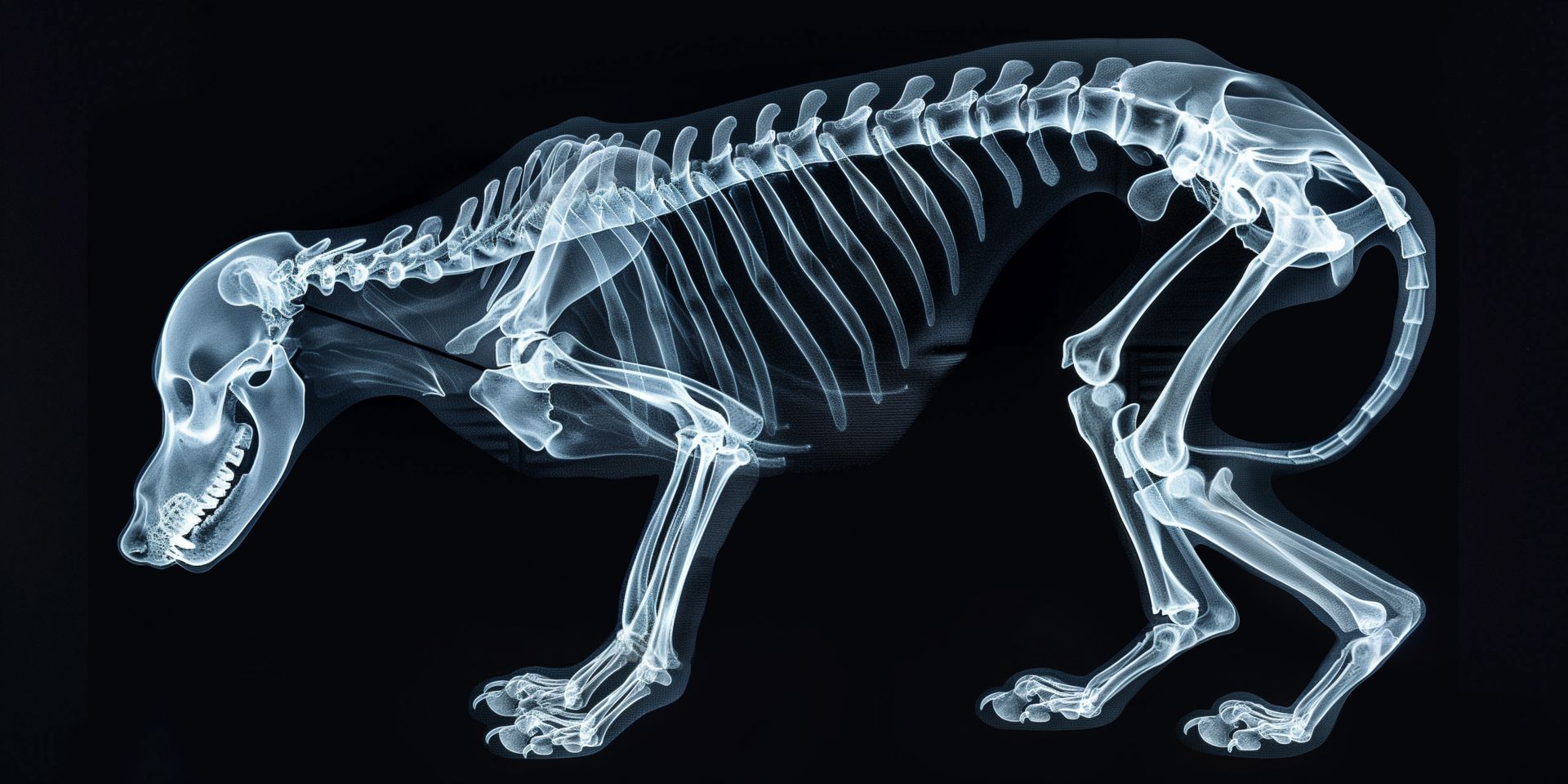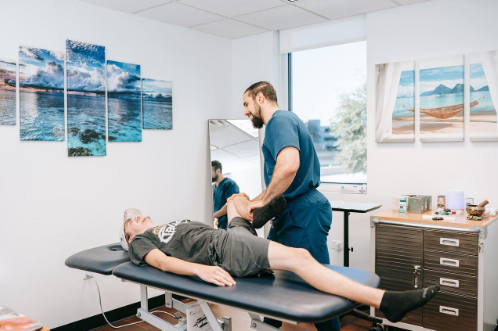Chiropractic Combined With Inversion Table Therapy
Are you suffering from back pain or seeking relief from muscle tension? If so, chiropractic combined with inversion table therapy might be the solution you've been searching for. This innovative approach combines the expertise of chiropractors with the therapeutic benefits of inversion table therapy to provide a comprehensive and effective treatment option.
Chiropractic care focuses on the diagnosis and treatment of musculoskeletal disorders, particularly those affecting the spine. By utilizing manual adjustment techniques, chiropractors aim to restore proper spinal alignment, alleviate pain, and improve overall wellness. On the other hand, inversion table therapy involves using a specialized table that allows you to hang upside down, creating traction in the spine and relieving pressure on the discs and nerves.
What is chiropractic therapy?
Chiropractic therapy is a non-invasive, drug-free approach to treating musculoskeletal disorders. Chiropractors are trained professionals who specialize in the diagnosis and treatment of conditions that affect the spine, joints, and muscles. Using their hands or specialized instruments, chiropractors perform manual adjustments to manipulate the spine and other joints, aiming to restore proper alignment and mobility.
Chiropractic therapy is based on the principle that the body has the ability to heal itself when the musculoskeletal system is properly aligned. By correcting misalignments, known as subluxations, chiropractors can relieve pain, improve range of motion, and promote overall wellness. Chiropractic care can be effective for a wide range of conditions, including back pain, neck pain, headaches, sciatica, and sports injuries.
Chiropractors typically start with a thorough examination, including a medical history review and physical assessment. They may also request diagnostic imaging, such as X-rays, to further evaluate the condition. Based on their findings, chiropractors develop a personalized treatment plan that may include manual adjustments, spinal decompression, therapeutic exercises, and lifestyle recommendations.
What is inversion table therapy?
Inversion table therapy is a form of spinal traction that involves hanging upside down or at an inverted angle using a specially designed table. By using gravity to decompress the spine, inversion table therapy aims to relieve pressure on the discs, reduce muscle tension, and improve spinal alignment. This therapy has been used for centuries as a natural way to alleviate back pain and promote overall well-being.
The inversion table is specifically designed to support the body while allowing for controlled inversion. It typically consists of a padded table and ankle straps to secure the body in place. By adjusting the angle of inversion, individuals can control the amount of traction applied to the spine.
When the body is inverted, gravity helps to elongate the spine and create space between the vertebrae. This can relieve pressure on the discs, which act as cushions between the vertebrae, and reduce compression on the nerves. Inversion table therapy can also help to stretch and relax the muscles, improving blood circulation and promoting the delivery of oxygen and nutrients to the tissues.
Benefits of combining chiropractic therapy with inversion table therapy
By combining chiropractic therapy with inversion table therapy, individuals can experience a wide range of benefits. These two modalities work synergistically to improve spinal alignment, reduce muscle tension, increase circulation, relieve pressure on the joints, and promote overall relaxation and well-being.
Chiropractic therapy focuses on restoring proper alignment and mobility to the spine and joints. By addressing subluxations and imbalances, chiropractors can alleviate pain, improve range of motion, and enhance the body's natural healing processes. Inversion table therapy, on the other hand, helps to decompress the spine and relieve pressure on the discs and nerves. This can provide additional relief from pain and improve spinal flexibility.
Combining these two therapies can enhance the overall effectiveness of the treatment.
Chiropractic adjustments can help to prepare the spine for inversion table therapy by ensuring proper alignment and mobility. In turn, inversion table therapy can help to maintain the benefits of chiropractic adjustments by reducing tension and promoting spinal decompression.
Additionally, both chiropractic therapy and inversion table therapy have been shown to improve circulation and promote the delivery of oxygen and nutrients to the tissues. This can enhance the body's natural healing processes and support overall wellness. By combining these modalities, individuals can experience a comprehensive and holistic approach to managing their musculoskeletal conditions.
How chiropractic therapy works
Chiropractic therapy works by addressing subluxations and imbalances in the musculoskeletal system, particularly the spine. Chiropractors use their hands or specialized instruments to apply controlled and precise forces to the affected joints. These manual adjustments aim to restore proper alignment, alleviate pain, and improve overall function.
During a chiropractic adjustment, the chiropractor applies a quick and gentle thrust to the affected joint. This can produce a popping or cracking sound, known as cavitation, as gas bubbles are released from the joint. The adjustment is typically performed on a specially designed treatment table, and the chiropractor may use their hands or employ specific tools to deliver the adjustment.
The goal of a chiropractic adjustment is to restore proper joint function and mobility. By doing so, chiropractors can relieve pressure on the surrounding nerves, reduce inflammation, and promote the body's natural healing processes. Chiropractic therapy can be customized to address specific conditions and areas of concern, ensuring a personalized and effective treatment approach.
How inversion table therapy works
Inversion table therapy works by utilizing gravity to decompress the spine and relieve pressure on the discs and nerves. When the body is inverted, the force of gravity helps to stretch and elongate the spine, creating space between the vertebrae. This can alleviate compression on the discs, relieve pressure on the nerves, and improve overall spinal alignment.
The inversion table is designed to support the body in an inverted position. By securing the ankles and adjusting the angle of inversion, individuals can control the amount of traction applied to the spine. Beginners typically start with a mild angle of inversion and gradually increase the angle over time as their body adjusts to the therapy.
When the body is inverted, the muscles and ligaments surrounding the spine are stretched and relaxed. This can help to release tension and improve flexibility. Inversion table therapy also promotes blood circulation and the delivery of oxygen and nutrients to the tissues, supporting the body's natural healing processes.
Inversion table therapy is a safe and gentle way to decompress the spine and relieve back pain. However, it is important to use caution and follow the instructions provided by the manufacturer and healthcare professionals. Individuals with certain medical conditions, such as high blood pressure, glaucoma, or heart disease, may need to avoid or modify inversion table therapy.
Combining chiropractic therapy with inversion table therapy: The science behind it
The combination of chiropractic therapy and inversion table therapy can have a synergistic effect on the musculoskeletal system. Chiropractic adjustments help to restore proper alignment and mobility to the spine and joints, while inversion table therapy decompresses the spine and relieves pressure on the discs and nerves.
Research has shown that chiropractic therapy can improve spinal alignment, reduce pain, and enhance overall function. A study published in the Journal of Manipulative and Physiological Therapeutics found that chiropractic adjustments resulted in significant improvements in pain and disability among patients with chronic low back pain.
Inversion table therapy has also been studied for its effects on the spine and back pain.
A study published in the Archives of Physical Medicine and Rehabilitation found that inversion table therapy significantly reduced the need for surgery among patients with lumbar disc herniation. The therapy was also found to improve pain and functional outcomes.
By combining these two therapies, individuals can benefit from the unique advantages of each modality. Chiropractic adjustments can help to address specific misalignments and imbalances, while inversion table therapy can provide additional relief from pain and promote spinal decompression. This combination approach can enhance the overall effectiveness of the treatment and support long-term wellness.
Who can benefit from combining chiropractic therapy with inversion table therapy?
Combining chiropractic therapy with inversion table therapy can benefit individuals who are seeking a natural and non-invasive approach to treating their back pain and improving their quality of life. This combination therapy can be effective for a wide range of conditions, including:
- Chronic low back pain: Chiropractic therapy combined with inversion table therapy can provide relief from chronic low back pain by addressing misalignments, reducing muscle tension, and promoting spinal decompression.
- Herniated discs: Inversion table therapy can help to relieve pressure on the discs and reduce pain associated with herniated discs. Combined with chiropractic adjustments, individuals can experience improved spinal alignment and enhanced healing.
- Sciatica: Chiropractic therapy can help to address the underlying causes of sciatica, such as spinal misalignments or disc herniation. Inversion table therapy can provide additional relief by decompressing the spine and reducing pressure on the sciatic nerve.
- Muscle tension and spasms: Inversion table therapy can help to relax and stretch the muscles, reducing tension and spasms. Combined with chiropractic adjustments, individuals can experience improved muscle function and reduced pain.
- Overall wellness: Even individuals without specific musculoskeletal conditions can benefit from combining chiropractic therapy with inversion table therapy. This combination approach can enhance overall wellness by improving spinal alignment, promoting circulation, and reducing stress.
It is important to consult with a qualified healthcare professional, such as a chiropractor, to determine if this combination therapy is suitable for your specific condition and needs. They can provide a thorough evaluation and develop a personalized treatment plan that incorporates both chiropractic therapy and inversion table therapy.
Precautions and considerations when combining chiropractic therapy with inversion table therapy
While chiropractic therapy and inversion table therapy are generally safe and well-tolerated, there are some precautions and considerations to keep in mind. It is important to follow the guidance of a qualified healthcare professional and adhere to the instructions provided by the manufacturer of the inversion table.
Individuals with certain medical conditions may need to avoid or modify inversion table therapy. These conditions may include high blood pressure, glaucoma, heart disease, pregnancy, and certain musculoskeletal conditions. It is important to consult with a healthcare professional to determine if inversion table therapy is safe for you.
When performing inversion table therapy, it is important to start with a mild angle of inversion and gradually increase the angle over time. This allows the body to adjust to the therapy and reduces the risk of dizziness or discomfort. It is also recommended to use the inversion table in a safe and controlled environment to prevent falls or other accidents.
Finding a qualified chiropractor who offers inversion table therapy is essential. Not all chiropractors may have the equipment or expertise to provide this therapy. It is recommended to research and seek recommendations from trusted sources to find a chiropractor who specializes in combining chiropractic therapy with inversion table therapy.
Conclusion
Chiropractic combined with inversion table therapy offers a unique and effective approach to treating back pain and improving overall well-being. By combining the expertise of chiropractors with the therapeutic benefits of inversion table therapy, individuals can experience improved spinal alignment, reduced muscle tension, increased circulation, and overall relaxation.
If you're seeking a natural and non-invasive approach to treating your back pain and improving your quality of life, chiropractic combined with inversion table therapy may be worth exploring. Consult with a qualified healthcare professional, such as a chiropractor, to determine if this combination therapy is suitable for your specific condition and needs. They can provide a thorough evaluation and develop a personalized treatment plan that incorporates both chiropractic therapy and inversion table therapy. Take the first step towards finding relief and restoring your body's balance.
Family Chiropractic Plus in St Petersburg Florida offers the
best in Chiropractic care,
Physical Therapy, Inversion therapy and Massage Therapy. Call
727.388.0966 to make an appointment!














